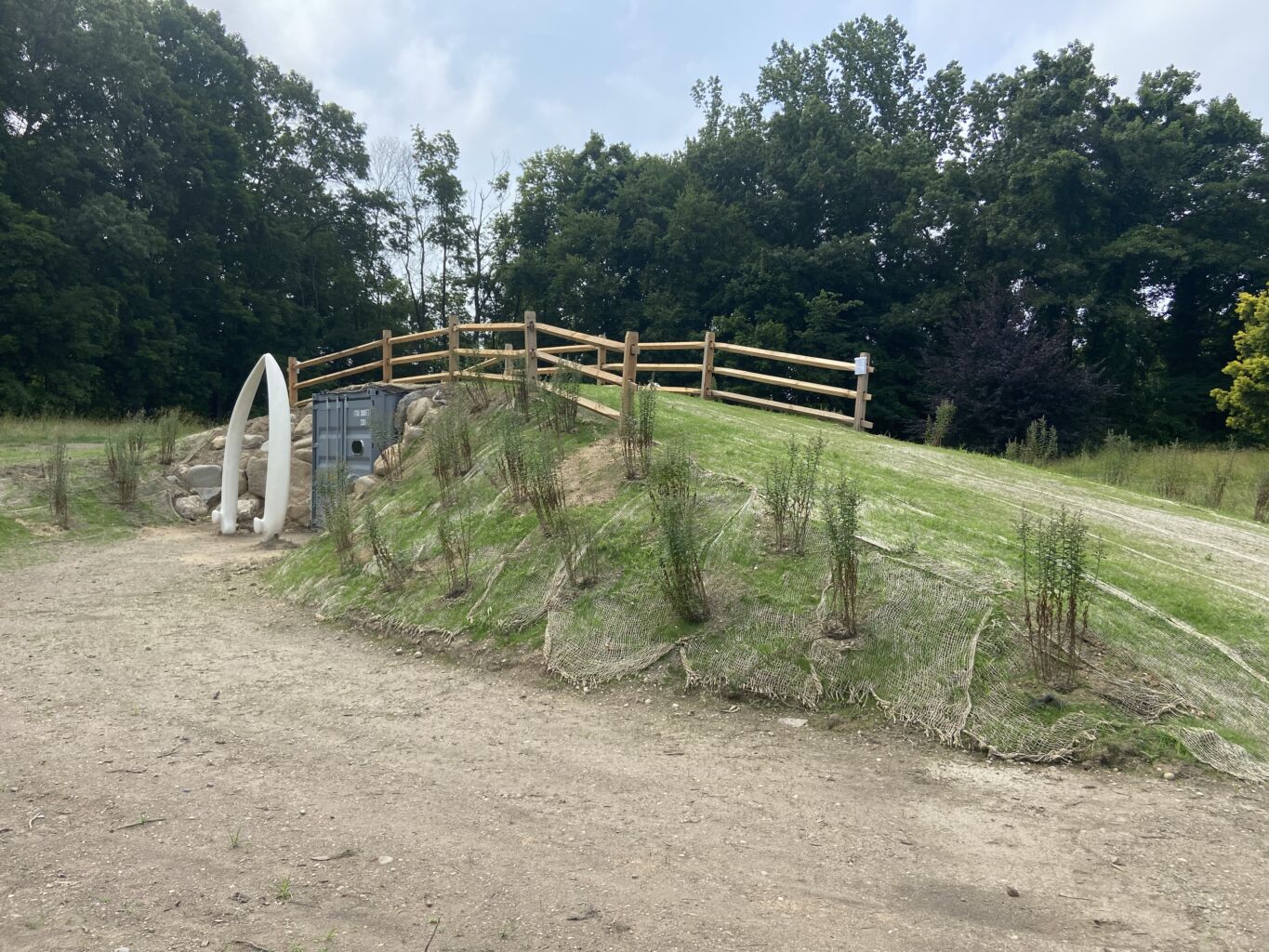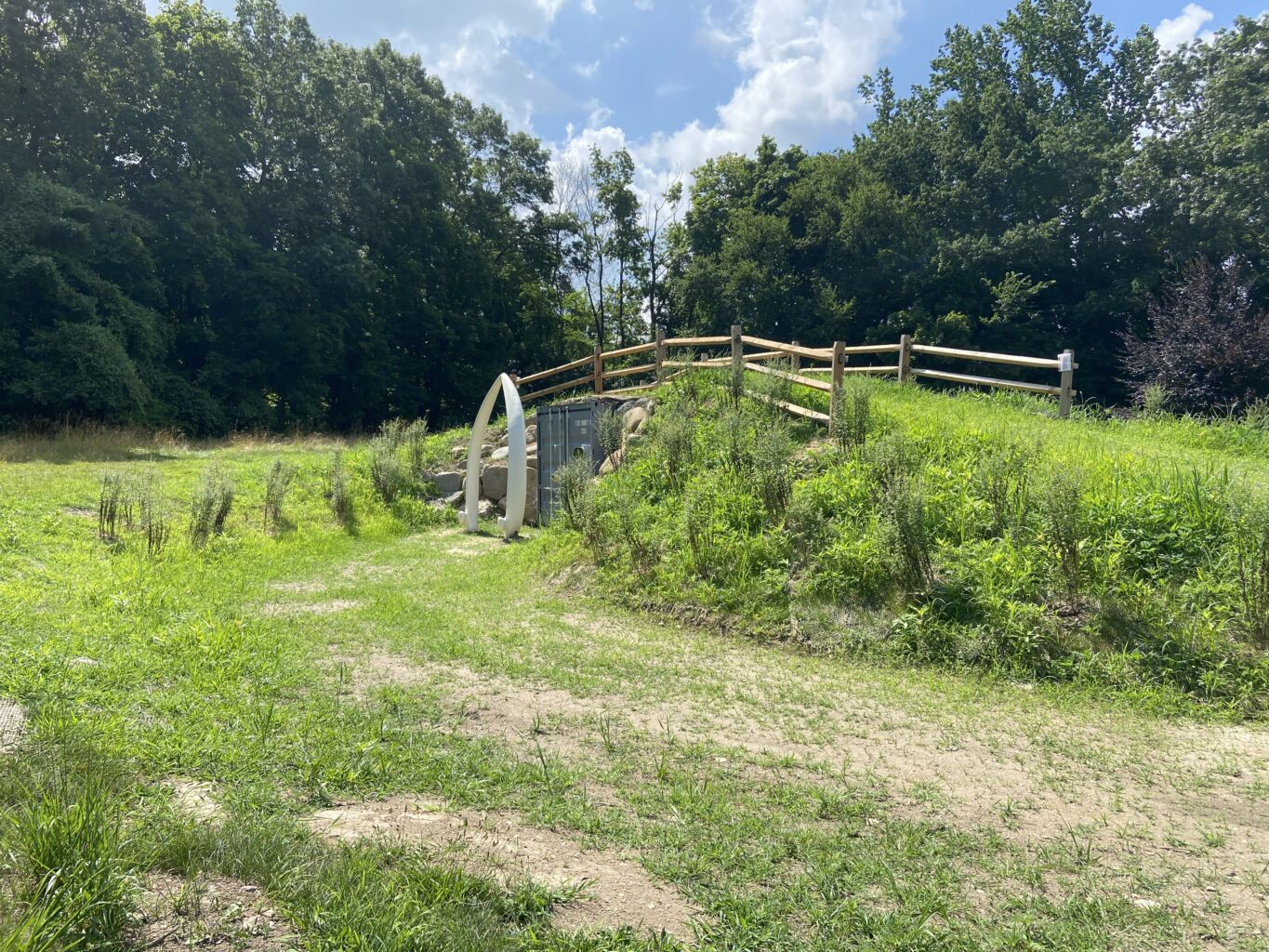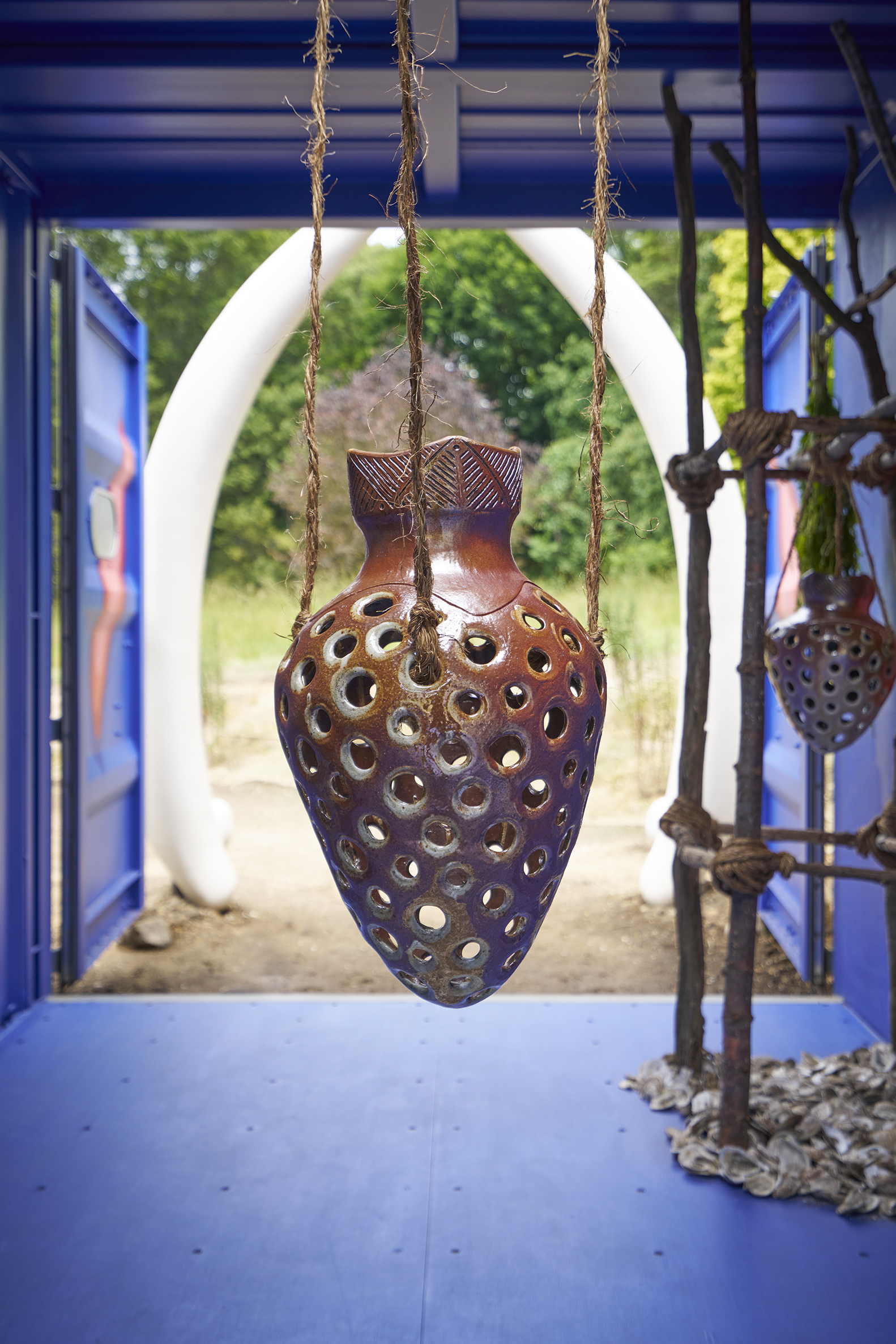


Planting Fields Foundation is pleased to present the work of artist Courtney M. Leonard (b. Shinnecock, 1980) through BREACH: Logbook 23 | ROOT at Planting Fields.
BREACH: Logbook 23 | ROOT is a site-specific installation that addresses how the colonization of Long Island has impacted the culture of coastal Indigenous groups, particularly the Shinnecock Nation. ROOT features two main design themes – whales and root cellars. The shape of the shipping container structure itself is meant to evoke the body of a whale. As you enter through the jaws of a Northern Right Whale, you move through the whale’s body. Through these motifs, ROOT explores themes of food and cultural sovereignty, as well as ongoing ecological issues that endanger the Shinnecock Nation and our global waterways.
At the intersection of food, cultural sovereignty, and ecological issues, we find the struggle by Indigenous communities to continue their traditional foodways, including the subsistence hunting of whales. By using a shipping container as the body of her installation, Leonard calls attention to the disproportionate amount of regulation put on Indigenous groups rather than international shipping companies when it comes to the wellbeing of endangered and vulnerable whale populations. Each year, thousands of whales are struck in international shipping lanes. In the last year, the bodies of more than two dozen whales have washed ashore along the east coast, including at Lido Beach and Robert Moses State Park on Long Island.
Whales are central to Leonard’s work and are especially relevant to the history of Planting Fields. Mai Rogers Coe’s maternal grandfather, Captain Peleg W. Gifford, was a whaling ship captain out of Fairhaven, Massachusetts, the second-largest whaling port in the United States at the time. Before her family made their fortune from Standard Oil, their finances had been rooted in the lucrative whale oil business. Commercial whaling decimated whale populations in the late 1800s, and international shipping continues to threaten them today.
Food sovereignty is the right of peoples to healthy and culturally appropriate food produced through ecologically sound and sustainable methods. Historically and up to present day, the right of Indigenous people’s access to traditional foodways, including the use of root cellars for food storage, has been challenged. When cattle belonging to colonizers fell through the ceilings of the cellars, Indigenous communities were obligated to pay for the injury to the animals, sometimes through the transfer of land. The ellipse shape in the roof of the structure ties together the themes of root cellars and of whales. It represents how cattle would fall into the cellars, and refers to the shape of a whale’s body, or a pod of whales, when viewed from above.
By bringing a shipping container to Planting Fields, Leonard is intentionally disrupting the landscape; a deliberate act that speaks to how the Shinnecock way of life has been and continues to be disrupted by land development and the environmentally unsustainable use of our waterways. This powerful installation asks us to take collective responsibility for our place in the global ecosystem and to build connections with one another to become better stewards of our shared home.

About the Artist and the BREACH Series:
Courtney M. Leonard (Shinnecock, b.1980) is an artist and filmmaker. Her current work embodies the multiple definitions of “breach”, an exploration and documentation of historical ties to water, whales, and material sustainability. In legal contexts, the word “breach” also means violation and infringement, as when other local and national governments impose policies that disregard sovereign Indigenous nations. Taking a ship’s log as a model, Leonard presents her artwork in installations and in series that act as visual “logbooks” recording the journey of BREACH.
